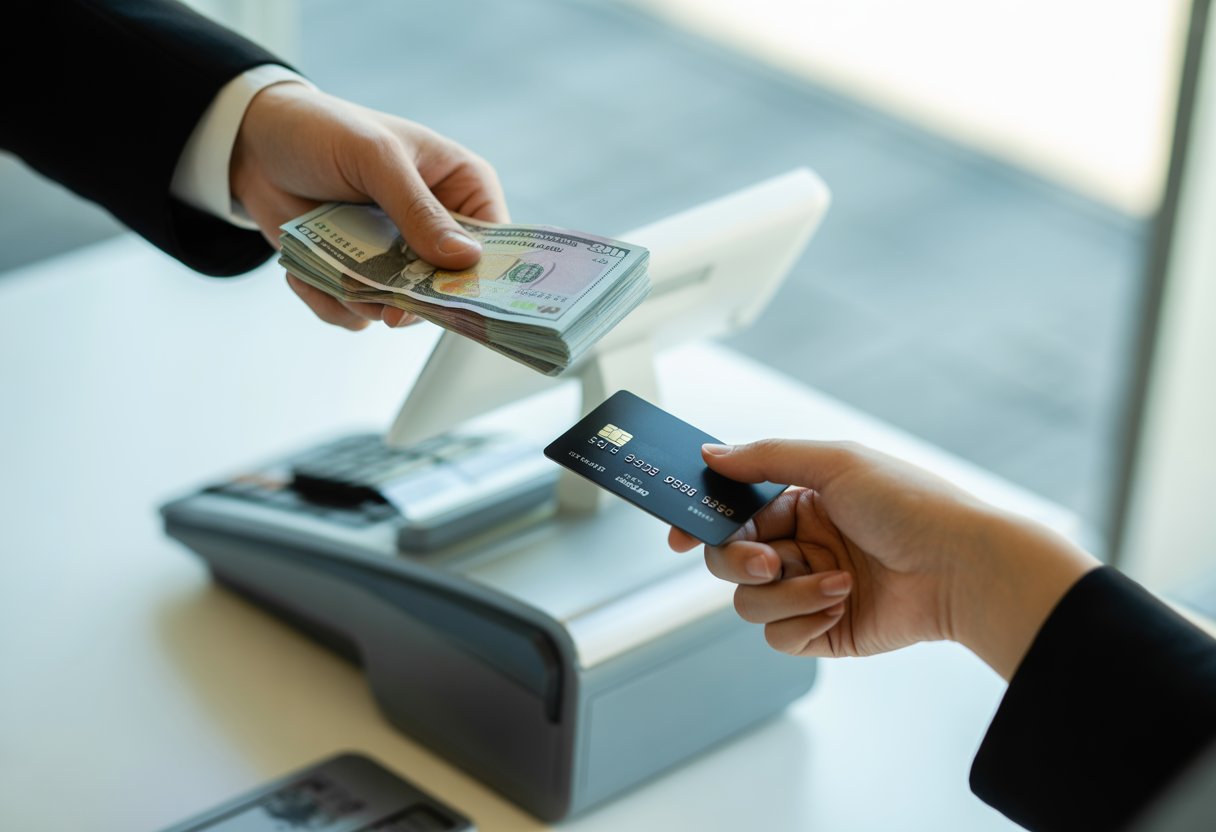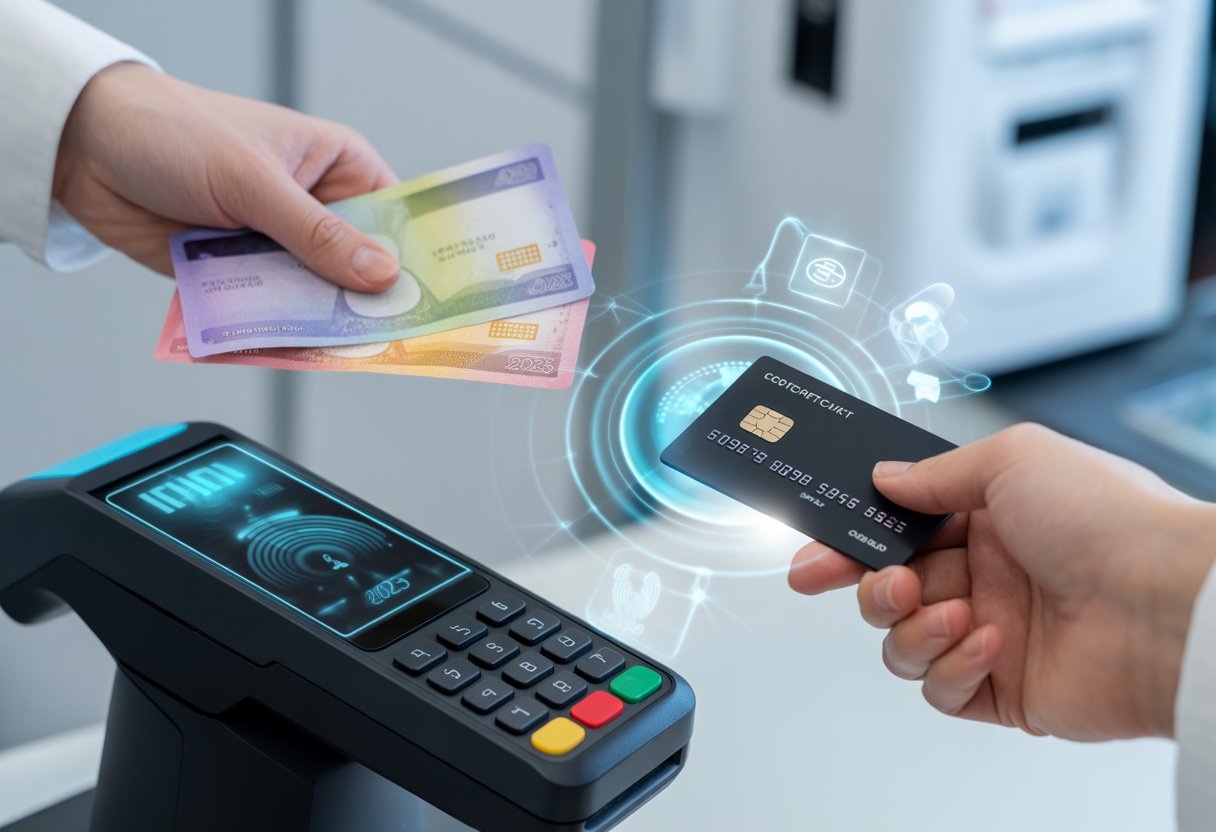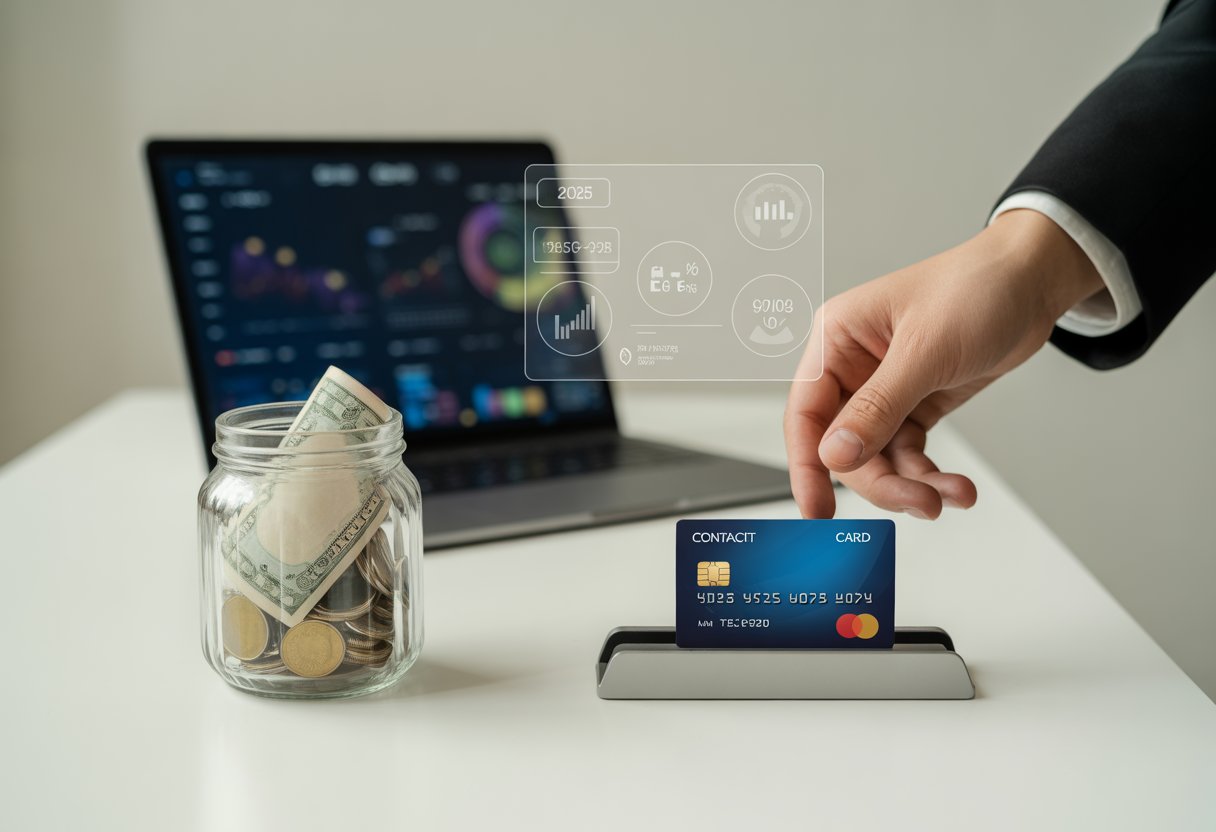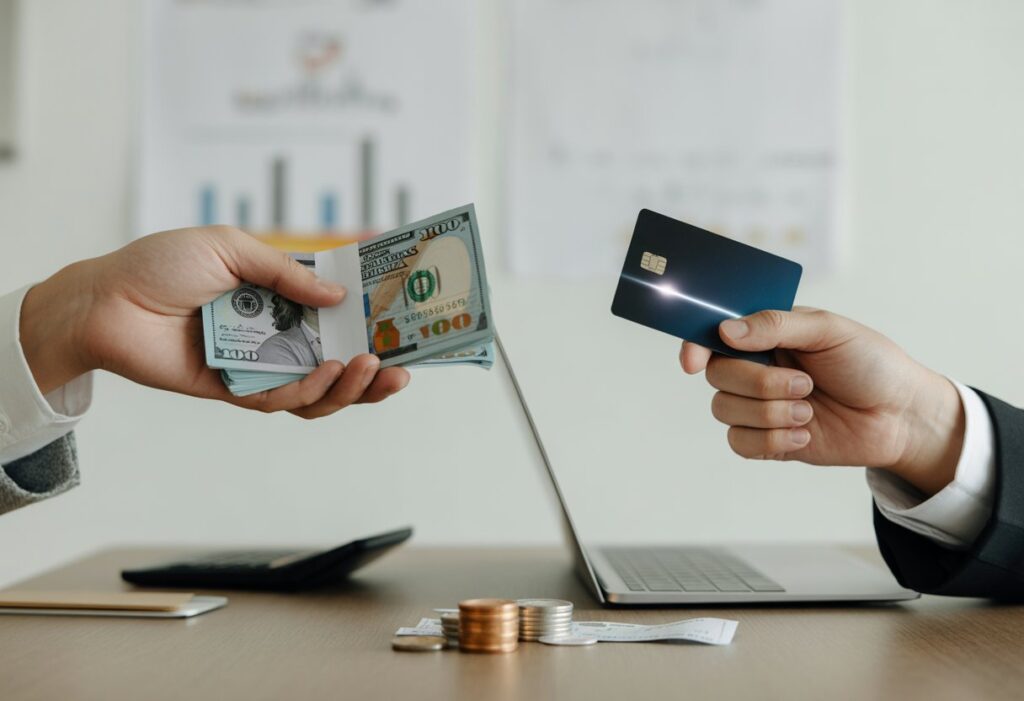Many people wonder whether cash or card is better for saving money in 2025. Both methods have advantages, but one clearly helps people control their spending better. Using cash often leads to better saving habits because it makes people more aware of how much they are spending.

However, cards can offer rewards, discounts, and easy tracking, which also helps some people save. The choice depends on personal habits and how disciplined a person is with their money.
This article will explore the pros and cons of cash and card payments, showing which one tends to help most people save more effectively.
Comparing Cash and Card: How Each Impacts Savings

Cash and card payments affect how much people save because they change the way people spend, control their budgets, and keep track of money. These differences shape whether someone can save more easily.
Spending Behaviour Differences
People tend to spend more when using cards than cash. With cash, they feel the money leaving their hands, which makes spending feel more real. Cards, especially contactless or mobile ones, can make purchases feel less tangible, leading to higher spending.
Studies show that card users often buy extra items or spend on small, frequent purchases. Cash users usually limit their spending to what they have in their wallet, helping avoid overspending.
Cash also encourages planning purchases ahead of time, while card payments make impulse buying easier. This behaviour affects how much people can save over time.
Budget Control Mechanisms
Cash offers a clear, physical limit. People can withdraw a set amount and only spend that. This method helps prevent overspending because once cash is gone, spending stops.
Card users rely on apps or statements to monitor spending. Some cards let users set limits or alerts, but these need regular checking to be effective. Without active review, it’s easy to lose track of spending.
Using a cash envelope system can work well for strict budget control. Cards require more discipline to avoid accumulating debt or overspending, especially if credit cards are involved.
Ease of Tracking Expenses
Cards provide automatic digital records of every transaction. This makes it easy to see where money goes, helping with budgeting and adjusting spending habits.
Cash requires manual tracking. People must write down expenses or save receipts, which some find time-consuming and easy to forget. This can lead to less accurate records and weaker control over spending.
Budget apps that connect to cards give real-time updates. Cash users must rely on their memory or extra effort to track expenses, which can affect their ability to save efficiently.
Psychological Factors Influencing Financial Decisions

People often react differently when spending cash compared to using cards. These reactions affect how much they spend and save. The way payments feel emotionally can shape their financial behaviour.
Pain of Paying with Cash
Using cash makes spending more real and immediate. Physically handing over notes or coins triggers a sense of loss. This feeling is called the “pain of paying”. It can make people think twice before buying something.
The pain is stronger with larger amounts. When people see their cash supply shrink in their hands, they become more careful. This often leads to spending less or avoiding impulse purchases.
Many studies show that cash users are more aware of their budget. The pain of paying acts as a natural control on overspending. It helps people stick to limits they set for themselves.
Invisible Spending with Cards
Paying by card can blur the sense of losing money. The process is quicker and less tangible. People often feel like they are not really “giving away” cash.
This leads to what some call “invisible spending”. Since the transaction feels painless, card users might spend more without noticing. They may forget small purchases or lose track of daily expenses.
Cards also delay the impact. With credit cards, the bill comes weeks later. This delay can weaken the connection between spending and its consequence, encouraging higher spending.
Some people take advantage of this but others risk going over budget. The invisibility of card payments is a key reason why people might find it harder to save.
Technological Advances and Security in 2025

New technology continues to change how people pay and protect their money. Payment methods now focus more on speed, ease, and safety for users.
Mobile Payments and Digital Cards
Mobile payments are widely used in 2025. Many shops and services accept payments through apps on smartphones or smartwatches. These digital wallets link bank cards or accounts and use near-field communication (NFC) technology to complete transactions quickly.
Digital cards offer benefits like instant virtual card creation and flexible spending limits. Users can generate one-time card numbers for online purchases to reduce risks. This makes mobile payments more convenient than carrying physical cards or cash.
Talk of discounts and rewards is common, as some apps give instant cashback or loyalty points. This can encourage saving by making small savings easier with everyday purchases.
Security Features and Fraud Prevention
Security is stronger than ever with biometric checks like fingerprint or facial recognition used for payment approval. This reduces the chance of stolen cards being used without permission.
Banks and payment networks use artificial intelligence to detect unusual spending habits. If suspicious activity is found, they quickly alert the account holder or block transactions to stop fraud.
Encryption and tokenisation protect card details during payment. Tokenisation replaces real card numbers with random codes, so hackers cannot steal sensitive information even if the data is intercepted.
Users are advised to keep their devices and apps updated to benefit from the latest security patches. This helps prevent malware attacks and data breaches.
Costs, Fees, and Incentives

Cash and card payments come with different costs and benefits. Users should consider fees linked to withdrawals and transactions, as well as rewards and loyalty programmes that can add value to card use.
ATM Withdrawal and Card Transaction Costs
Withdrawing cash from an ATM often includes fees, especially at machines not operated by the user’s bank. These fees range from £1 to £3 per withdrawal. Some banks offer limited free withdrawals each month but charge for additional ones.
Card transactions can also have costs. Some credit cards charge foreign transaction fees of around 2-3% for purchases abroad. Debit cards usually have lower or no fees for domestic use but may charge a small fee for international spending.
Using cash avoids transaction fees but might cost more due to travel or time spent accessing ATMs. Users should check their bank’s terms to avoid unexpected charges.
Cashback, Rewards, and Loyalty Schemes
Credit and debit cards often offer cashback or reward points on purchases. Cashback rates typically range between 0.5% and 2% per transaction. Some cards provide higher rates at specific retailers or categories like groceries or fuel.
Loyalty schemes linked to cards can include discounts, vouchers, or special deals. These incentives help users save money if they regularly shop with particular brands or supermarkets.
Cash does not provide direct rewards but can help people stick to a strict budget, preventing overspending that might happen with easy card payments.
Social Trends and Demographic Preferences
Payment choices depend heavily on age and location. Different groups favour cash or cards based on habits, access, and trust in technology. These preferences affect how people manage money and save.
Consumer Preferences by Age Group
Younger adults, especially those under 35, prefer cards and digital payments. They value convenience and apps that track spending easily. This group tends to save more when using cards with budgeting tools.
Older adults often stick to cash or a mix of cash and cards. They trust cash more for controlling spending and avoiding overspending. Some seniors avoid digital payments due to security fears or lack of tech skills.
Middle-aged people balance both methods. They use cards for large purchases but keep cash for daily expenses. This group often chooses payment methods based on the situation rather than habit alone.
Regional and Societal Variations
Urban areas show a strong shift towards cashless payments. Cities tend to have better access to card terminals and online banking. People here also receive more offers for cashback or discounts when paying by card.
In rural areas, cash remains important. Limited internet or banking services push many to use cash more often. Trust in technology also varies, with some rural communities preferring familiar cash transactions.
Social factors like income and education influence payment methods too. Higher income groups favour cards for rewards and ease, while lower income groups often rely on cash to manage budgets.
Environmental and Ethical Considerations
Cash production uses physical resources like paper and metals. Banks must also transport cash regularly, which increases carbon emissions. This process adds to pollution and waste.
Card payments need electronic systems, data centres, and plastic cards. These use energy and raw materials. However, many payment companies work to reduce their carbon footprint by using renewable energy.
Ethical concerns arise with both payment types. Cash is anonymous but can support illegal activities. Cards offer more transparent tracking but require sharing personal data.
Some cards use recycled or biodegradable materials now. This effort helps lower environmental impact. Consumers can choose cards from companies focusing on sustainability.
Here’s a simple comparison of key points:
| Aspect | Cash | Card |
|---|---|---|
| Materials used | Paper, metal | Plastic, electronic components |
| Energy consumption | Transport, minting | Data centres, manufacturing |
| Environmental impact | Physical waste, carbon emissions | E-waste, energy use |
| Ethical concerns | Anonymity, illegal use | Privacy issues, data tracking |
Both cash and cards have environmental and ethical trade-offs. Knowing these helps people make informed choices.

